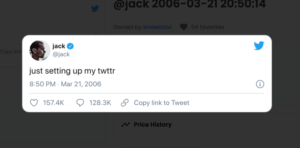
Some Say Liberals and Conservatives Have Different Core Values, and That’s What Separates Them. Is That True?
I watched a TED Talk last week that promoted an idea that’s become popular in recent years among a certain faction of social scientists. The speaker argued that liberals and conservatives have different political views because they have different core emotional values. Liberals value openness and flexibility. Conservatives care more about vigilance and security.
When I was a young wannabe, I would have agreed. Favoring free love and legal marijuana, I saw myself as open and flexible. Moreover, I viewed my parents, and the rest of their generation, as “stiffs.” (That was the term we used.)
That pseudo-psychological assessment provided me with two levels of pride. I felt intellectually superior to my elders, and I felt proud of my willingness to tolerate them.
When I grew out of childhood, I had to abandon childish things. Including that specious sense of superiority. I continued to value openness and flexibility, but I had to give equal credit to caution and security.
I do believe that, as a group, conservatives tend to value stability and tradition. But I don’t believe they are always less open or less flexible.
As for the liberals, those I know are open in their willingness to criticize and condemn conservatives. But they are shockingly close-minded when it comes to conservative ideas.
A related myth about conservatives and liberals is that liberals are more open and flexible when it comes to sharing their wealth. In fact, all of the studies that I’ve seen (including the one below) show that conservatives give more to charity on a per capita, per income, and per net-worth basis.
A third myth about the core psychological traits of liberals vs. conservatives is that the latter promote fear to sell their political ideas, whereas liberals sell hope and optimism. But, once again, the evidence doesn’t support this claim. A recent example is the political response to the pandemic. In that case, it was the liberals selling fear and the conservatives arguing against it.
Those are the facts. And that’s how I see it. Let me know your thoughts. In the meantime, click here for another TED Talk I watched not long after watching the first one. This one, I thought, was a bit broader in topic, deeper in thoughtfulness, and generally more interesting.
 MarkFord
MarkFord

